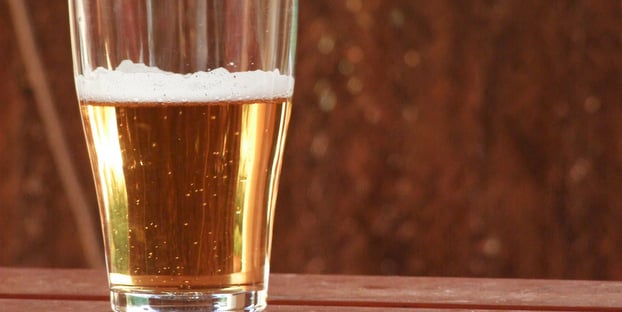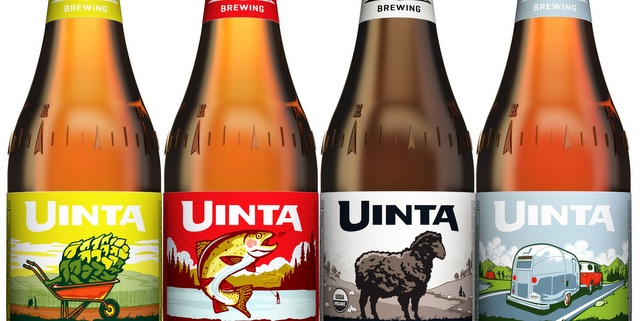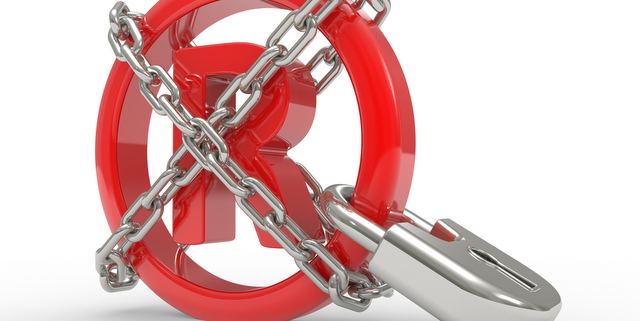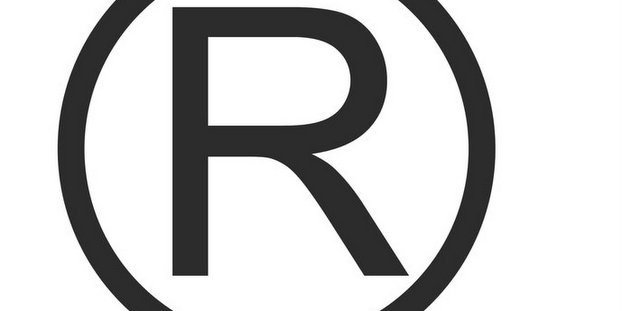Trademarks have, once again, been the talk of the craft beer town. In past articles we have talked about how to obtain a federally registered trademark and only in passing have said that it is important to protect. Now, let’s talk about how, and why, to protect those trademarks.

Trademark protection: Why
Trademarks were designed as a means of ensuring distinctiveness in branding so that consumers know what they are getting in terms of quality. The idea is that if Johnny Appleseed walks up to a cooler and decides to buy the Sculpin IPA with the pretty fish on the front on a Tuesday and likes what he gets, then he should be able to go back on Thursday and get the same product when he reaches for a Sculpin IPA with the pretty fish on the front. If anyone was allowed to indiscriminately brand their products to match the next big thing, consumers would never be able to tell which products were genuine and which were, essentially, knockoffs.
Now craft beer is not exactly suffering from a multitude of knockoffs these days; craft beer has been nothing if not original and boundary-pushing. But trademarks also protect the companies using them from wasting money on branding and marketing. Consider: otherwise loyal customers breezing through the liquor store might grab the wrong six-pack if your label has a long lost identical twin sitting two shelves over.
And since trademark law is about maintaining distinctiveness, if you let your mark lose distinctiveness then you also lose the trademark. It is your privilege to own the mark and therefore your responsibility to protect it. We already established that you are losing revenue from lost sales; now add to that the chunk of change you already invested to get your mark registered in the first place. If you try to recoup those costs by starting fresh, remember that it includes rebranding all of your merchandise as well. All in all, confusingly similar marks are an expensive ordeal, hence, the need to protect them.
Trademark protection: How
Frequently, if not usually, the adoption of a confusingly similar mark is not done intentionally or vindictively, but rather accidentally. There are only so many plays on the word “hop” that make sense and with the number of beers on the market today, they are likely all claimed already. Many brewers simply do not realize that they need to run clearance on a mark before adopting it. New beer in the belly makes for exciting times but bad business decisions. The moral of the story then is to not be a jerk. Understand that people make mistakes and whenever possible it is better (and most assuredly cheaper) to resolve the matter amicably.
Step one: Research
Before you tell another brewer what they can and cannot do in their business, make sure that you do in fact own what you think you own. If you have a federally registered mark, then you likely have the superior rights, but sometimes things slip through the cracks.
You are both making beer, so it stands to reason that you are both beer people. Call that beer person and, by all means, discuss it over a beer. There is a decent chance that it was an honest mistake and given the opportunity that person will take reasonable steps to discontinue the infringing use.Even if you own a federally registered mark, if someone else was using it before you, then they have the right to continue doing so. They may be locked into the geographic area in which they were selling and be blocked from expansion, but they get to keep the markets prior to your registration, regardless. If, on the other hand, you own a federally registered mark and someone starts using the same or similar mark after you were already on the books, then they are infringing.
On a related note, understand the limits of a design mark. Word marks are generally straightforward, but designs within logos can be trickier. Businesses are able to register logo designs as trademarks, but the protection afforded is fairly strict. In the application you are required to describe the mark in its entirety, and that description is what you own. If you submit it in colors, then you only own the mark in those colors. If you surround the primary design with borders and shading, or if you include text (which is inevitably in a particular font), or if you include a stylized animal — whatever you submit is what you will own, and you will not be allowed to make material changes to the mark later on either.
The same test used for word marks, whether two marks are confusingly similar, will be used. But with designs, the leeway in similarity is generally lower than with word marks given that visual designs can leave such a distinct impression. That is not to say that design marks cannot be infringed because they most certainly can, but when alleging infringement on a design mark, consider even minute differences before approaching the other party.
Step two: Personal contact
You are both making beer, so it stands to reason that you are both beer people. Call that beer person and, by all means, discuss it over a beer. There is a decent chance that it was an honest mistake and given the opportunity that person will take reasonable steps to discontinue the infringing use. No one wants to get sued. And while I never recommend opening the conversation with that, it is inevitably in the back of any business owner’s mind.
Alternatively, they may try and talk you into letting them continue their use. People can develop intense emotional attachments to their marks, and the idea that they can no longer use one is like telling them to rename their own child. If the marks are not identical and can be made sufficiently distinct from each other, then continued use for both parties may be a perfectly valid option. Some marks are capable of coexisting. Just be sure to establish the ground rules, such as how each party will use their marks moving forward, how the branding will look, if the branding is going to be changed, whether the other party has a say in that process, and so on. Once you have those kind of contingencies worked out, get them in writing.
The exact terms of the agreement will be for you to decide. The important thing is that you can prove you have properly policed the mark.
Step three: Cease-and-desist letter
If the other party has no intention of cooperating or is being unreasonable in their demands, then the next step is, alas, legal counsel. Sometimes people bet on empty threats, hoping that you are all talk and no action. This is when you bring in an attorney to send a cease-and-desist letter to let them know that you are serious and fully intend to protect your mark. Sometimes letterhead with a fancy name at the top is enough to scare the other party into submission by itself. Frequently, the other party assumes you did not know what you were talking about when you called and kindly asked them to change branding. But the weight of “esq” at the end of a signature tends to inspire a little more confidence. Again, no one wants to get sued.
This is a delicate path to tread, however. Too often I see cease-and-desist letters in standard legalese that come across as brutish and rather antagonistic. The lawyer means well but does not understand the culture surrounding craft beer, so you must choose your representative wisely. We’ve all seen how powerful the court of public opinion can be. The flipside to the cost analysis discussed above is if you run counter to the culture of collaboration and community that the craft beer movement is built on, you will suffer financially.
The craft beer enthusiasts that buy your beer, wear your T-shirts to GABF and discuss your every move on RateBeer and BeerAdvocate do not take kindly to jerk moves. If you go down this path, always read over the cease-and-desist letter before it goes in the mail, with an eye to the idea that it may very well end up splashed across the history books of social media. Accordingly, keep the tone respectful and reasonable. Harsh demands and vindictive, over-the-top language can easily leave you branded as the trademark bully whose beer is not worth buying as a matter of conscious. Don’t be that brewer.
Step four: Dropping the proverbial hammer
Know that sometimes a few rounds of communication are needed after the initial cease-and-desist to get things sorted, so by no means is this a one-and-done situation. That being said, some people never learn. And if the other party simply will not cooperate, then the next step is to lay down the law. The attorney you hired for the cease-and-desist will be able to counsel you about when that time has come.
Once there, you can still take a shot at avoiding litigation. Litigation is costly in more ways than one. It consumes time, money, emotional stability and all of the same PR issues discussed above. An oft-underutilized middle ground is mediation.
As Jason Gladfelter of OvalOptions notes: “Even if a settlement is not reached, mediation has two main benefits. The first is the opening of communication lines. Sitting face to face often changes the dynamics of a relationship that phone and e-mail preclude. This can strengthen, maintain and establish personal relationships, which make collaboration easier. The second benefit is a ‘willingness to mediate.’ Sometimes, one party will agree to mediate and the other will not. If this happens, the first party will receive a letter stating that, yes, they tried to set up mediation and the other party was unwilling. This says to a judge [and the public] that one party was willing to talk it out, but the other was not.”
Mediation is also generally cheaper than a day in court. Granted, sometimes litigation is a necessary evil. And should it come to that, the best advice is to consult legal counsel. But whenever possible, remember: the order of events should always aim for collaboration, mediation and then, and only then, litigation.
 Candace L. Moon is a San Diego-based attorney who has spent the last four years dedicating her law practice to the craft beer industry. She has worked with over 100 craft breweries and craft breweries-in-planning nationwide, handling business entity formation, alcoholic beverage law, contract review, trademark law, as well as other legal needs. Her clients range from Green Flash and Drake’s to Jamil Zainasheff’s Heretic Brewing. Moon’s undergraduate degree is from the University of Virginia and her juris doctorate is from Thomas Jefferson School of Law in San Diego, Calif. She has been a member of the California State Bar since 2008 and the Brewer’s Association since 2009. Contact her at [email protected]; her website, www.CraftBeerAttorney.com; or her Twitter account, CraftBeerAttny.
Candace L. Moon is a San Diego-based attorney who has spent the last four years dedicating her law practice to the craft beer industry. She has worked with over 100 craft breweries and craft breweries-in-planning nationwide, handling business entity formation, alcoholic beverage law, contract review, trademark law, as well as other legal needs. Her clients range from Green Flash and Drake’s to Jamil Zainasheff’s Heretic Brewing. Moon’s undergraduate degree is from the University of Virginia and her juris doctorate is from Thomas Jefferson School of Law in San Diego, Calif. She has been a member of the California State Bar since 2008 and the Brewer’s Association since 2009. Contact her at [email protected]; her website, www.CraftBeerAttorney.com; or her Twitter account, CraftBeerAttny.
This article is offered only as a public service to the web community and does not constitute solicitation or provision of legal advice. This article should not be used as a substitute for obtaining legal advice from an attorney authorized to practice in your jurisdiction and you should always consult a suitably qualified attorney regarding any specific legal problem or matter you may have.





CRAFT BIZ: How to Defend a Your #CraftBeer Trademarks. #ctbeer #branding #trademark http://t.co/AnrsQNIuG5 http://t.co/c8VLxLFIjR
RT @mkanach: How to defend your #craftbeer #trademarks <– another great article by @CraftBeerAttny http://t.co/Lx2ZjnUVLc via @CraftBrewin…
RT @CrowdBrewed: How to defend your craft beer trademarks http://t.co/ZikOFQIB5u via @craftbrewingbiz #trademarks #trademark #beer http://t…
How to defend your #craftbeer #trademarks <– another great article by @CraftBeerAttny http://t.co/Lx2ZjnUVLc via @CraftBrewingBiz
How to defend your craft beer trademarks http://t.co/ZikOFQIB5u via @craftbrewingbiz #trademarks #trademark #beer http://t.co/m2aYwxrJcm
RT @CraftBrewingBiz: How to defend your craft beer trademarks: http://t.co/oRt0FLyxnD More awesome advice from @CraftBeerAttny
Joe Alfeo liked this on Facebook.
James Swann liked this on Facebook.
LeeRoy Ordaz liked this on Facebook.
Stacy Allura Hostetter liked this on Facebook.
How to defend your craft beer trademarks http://t.co/dTSp1FevFJ #beerlaw #craftbeerattorney #trademarks #craftbeer
RT @CraftBrewingBiz: How to defend your craft beer trademarks: http://t.co/oRt0FLyxnD More awesome advice from @CraftBeerAttny
RT @CraftBrewingBiz: How to defend your craft beer trademarks: http://t.co/oRt0FLyxnD More awesome advice from @CraftBeerAttny
Jared Read liked this on Facebook.
Jason Kneupper liked this on Facebook.
RT @CraftBrewingBiz: How to defend your craft beer trademarks: http://t.co/oRt0FLyxnD More awesome advice from @CraftBeerAttny
RT @CraftBrewingBiz: How to defend your craft beer trademarks: http://t.co/oRt0FLyxnD More awesome advice from @CraftBeerAttny
RT @CraftBrewingBiz: How to defend your craft beer trademarks: http://t.co/oRt0FLyxnD More awesome advice from @CraftBeerAttny
RT @CraftBrewingBiz: How to defend your craft beer trademarks: http://t.co/oRt0FLyxnD More awesome advice from @CraftBeerAttny
RT @CraftBrewingBiz: How to defend your craft beer trademarks: http://t.co/oRt0FLyxnD More awesome advice from @CraftBeerAttny